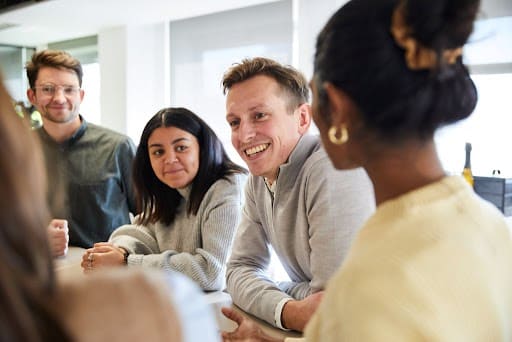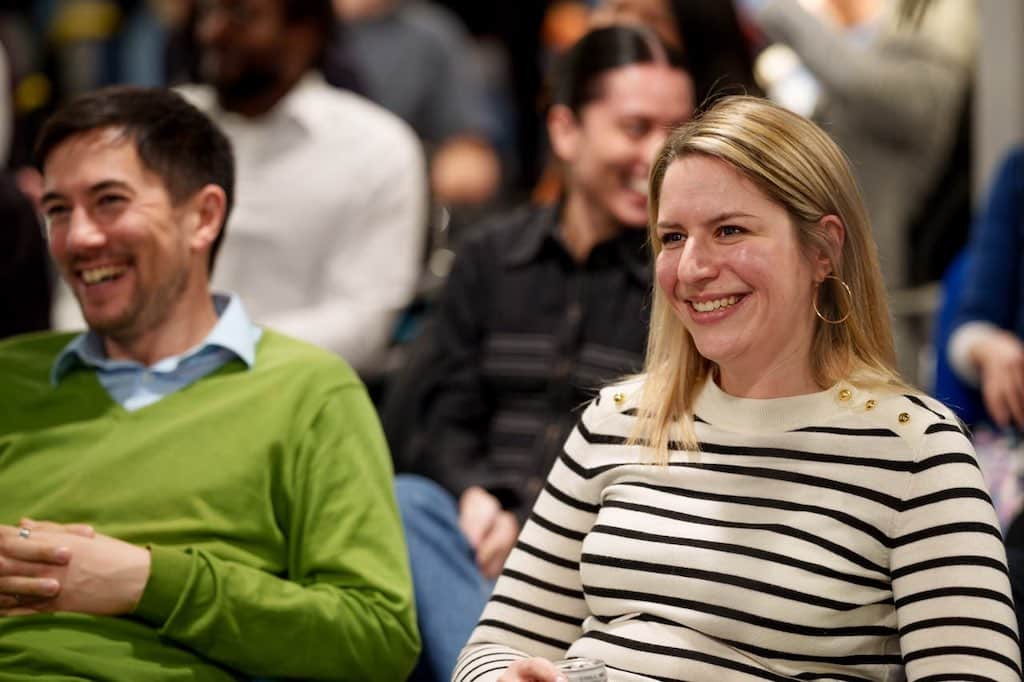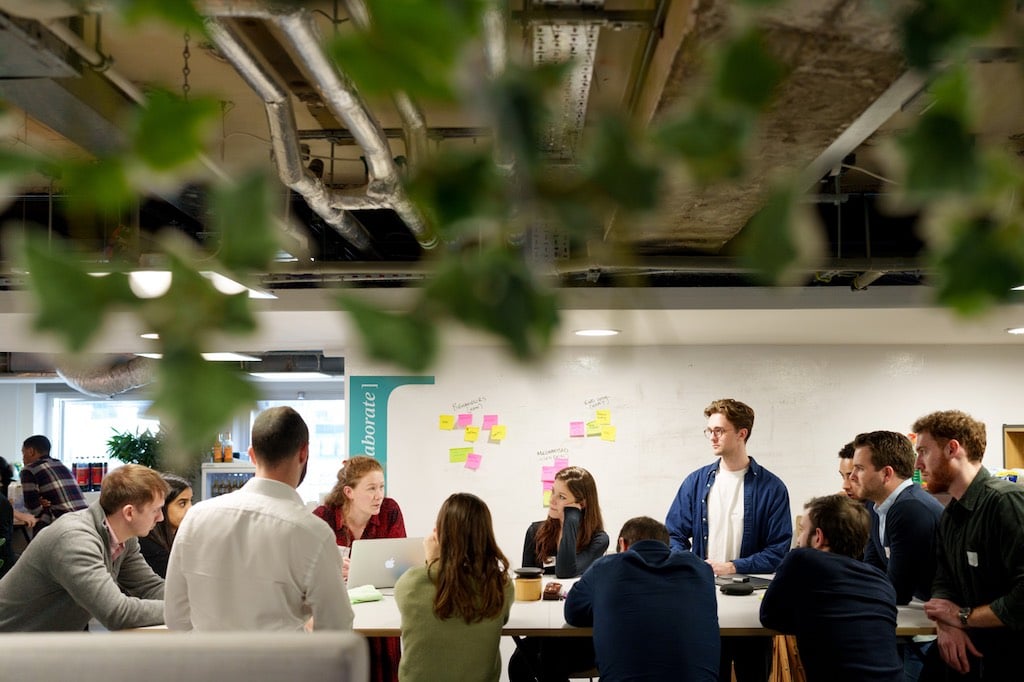Clarasys Employee Ownership Trust are majority shareholders in the business but what does that mean? Our EOT representatives reveal all…
The role of the employee ownership trust now and in the future
The role of the employee ownership trust now and in the future
Clarasys Employee Ownership Trust are majority shareholders in the business but what does that mean? Our EOT representatives reveal all…

Meet the author
In 2018, our three founding members sold a majority of their shares to the Clarasys Employee Ownership Trust. As an employee-owned business, we all have a say in our direction of travel.
To ensure employees’ interests are looked after and our culture continues to remain the same, the Employee Ownership Trust works alongside the Board of Directors. The Trust makes sure the company operates in the best interest of the team. It has three members; an elected employee, one of the original shareholders, Claudia, and an independent representative, Pete Daykin, who knows our business well.
Until the end of 2022, principal consultant Oli Rodi was our elected employee on the Trust. This year, Oli started a new role at a charity, and has been replaced on the Trust by Sarah Rigby as a result of a company-wide vote.
Sarah joined Clarasys in 2019 and is one of our principal consultants. Her experience prior to joining us was in corporate organisations where command and control was the norm.
Here, Oli reflects on his three-year tenure as employee representative and Sarah explains how she sees her role as the company scales.
Oli Rodi – Clarasys previous employee ownership trust representative
Serving as the employee rep for three years was immensely fulfilling. It was a huge learning curve for me personally in terms of understanding how the business needs to operate to be profitable whilst remaining a great place to work.
The focus for me was to ensure the Trust is able to help the business in the future. I feel like we’re making great progress in the way the Trust operates. It almost acts as a comfort blanket when there are moments of nervousness or uncertainty. The best example of it in action was during the pandemic. At that moment in the history of Clarasys, being employee-owned really shone through. We decided to cut our pay to protect the business and our jobs, and thankfully we were able to move back to being able to afford full pay quickly. Being employee-owned has played an important role in helping us not to go down the wrong route. That is one of my biggest takeaways during my three years on the EOT.
There are things I would have liked to have done such as give more frequent updates on what the Trust was doing – Clarasys people tend to like a lot of information. I had also hoped to touch base more with more people in the business. We got some way towards that by setting up the Advisory Board to offer advice to people when big decisions about the business needed to be made. But I think Covid, together with the rapid growth of the business, meant that I wasn’t able to meet as many people as I’d have liked. It’s difficult to speak to 40 new joiners working in remote offices or from home before you represent them in a meeting.
I’ve always loved telling new joiners that we decide as a collective what we want to do with the profit once the loan has been repaid. It means we can increase profit share quite significantly as a result, and people are often amazed when they’re told that.
Sarah Rigby – Clarasys new employee ownership trust representative
Coming from a big organisation where you had no ownership over things meant a big adjustment when I arrived at Clarasys. The employee ownership trust helps to focus people’s minds. As business owners, there is transparency on our finances and understand profit and how that is distributed. We also think about what will happen once the loan the EOT took out to buy shares from the founders is repaid. It’s really exciting to be a part of that – you wouldn’t have that kind of involvement in another organisation. I think being employee-owned is a big part of why people decide to join us but it isn’t made a big song and dance of here because we already behaved like business owners in the way we made decisions. We have decentralised decision-making and a flat hierarchy at Clarasys.
My focus is to ensure I connect more with other parts of the business as we grow to get an accurate view of what people are thinking and feeling. I’m trying to tap into different forums when surveys come out and after company updates to get an idea of what people are getting frustrated about.
I want to tap into the People Team to find out what issues are coming out of the quarterly and six-weekly meetings and understand people’s priorities. I am also keen to work closely with the Insight and Improvements Team which runs the employee satisfaction survey twice a year. This is a centralised team that gathers employee data and has visibility on information from gender equity and diversity surveys.
My immediate focus is to see how we can improve the Advisory Board going forward. It exists to share views across the organisation and provide input and feedback to others in the business who are making key decisions, for example, changes to policies and investments. Does it achieve its purpose and do people seek advice? We have one person per consultant grade and for each different area of the business on the Board and I want to ensure that it is effectively serving its purpose, accurately representing the views of our people, and giving the business what it needs.
People have a genuine interest in the longer term after we have repaid the loan, so what does being an owner mean to people and what do they want from the organisation? Oli started work on this and we want to build on that to get people talking about it. It will creep up on us so we need to get the ideation going.
My reflection on the board meeting is that it’s very informal. There is depth to it, but it’s light touch with a role to bring out the voice of our people and ensure employees are considered at a board level. We look at our top-level metrics to ensure that we are heading in the right direction. Are we on track and what’s going on? That’s very different from most organisations where progress is very slow because things like budget approvals have to go to the board.

